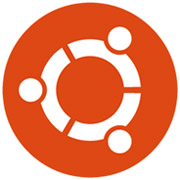
Regular readers know that I usually stick to the well-charted territory of essential terminal commands and practical overviews of Linux history, since they are immediately useful to newcomers. Thankfully for beginners, the basics don’t change very quickly — but that’s not to say that Linux is a stagnant ecosystem. Far from it. Linux can be found at the very frontier of emerging computer trends.
Most current events in the Linux community have little direct impact on the average desktop user, but one recent development that very much does is Canonical’s decision to end development of Ubuntu’s flagship Unity desktop. This was disheartening news for Unity fans this spring, but over the past few months it has been the subject of intense discussion throughout Linux developer and user circles for what it portends for the community at large.
Linux Pioneers
When the Linux kernel was unveiled to the world in the early 90s, there was a rush to devise and release new projects based on it. Without any existing precedents, and with a seemingly limitless field of possibilities, most distribution developers tailored their projects for specific use cases.
That development model served both to increase the likelihood that the distribution would stand out in its niche and to reduce the workforce needed to polish and maintain it.
Red Hat, one of the first Linux titans to emerge, optimized its operating system for running smooth and stable servers. Debian focused on providing a dependable yet customizable desktop (though it could double as a server as well). A number of others blazed their own trails.
Many entrants in the first wave of Linux distributions excelled at their respective specialties, but few were ambitious enough to aspire to dominate multiple markets.
Enter Ubuntu
Mark Shuttleworth founded Canonical in 2004 to launch Ubuntu, one of Linux’s first and most promising attempts to create a distribution that could bridge the traditional use-case divides — and do it with flair.
After establishing a foothold in both desktops and servers, Ubuntu unveiled its own graphical desktop environment, Unity, in 2010.
Most desktop environments are standalone projects, and the vast majority of Linux distributions ship with a default desktop environment or provide users with the choice of many competing desktops at installation time.
Ubuntu’s launch of Unity put it in an elite new class of flagship Linux projects by giving it a look and feel to match — a feat that even today only a handful of distributions can lay claim to.
Still, Ubuntu was just getting started. After the birth and explosion of the mobile device market, Ubuntu in 2013 set its sights on a smartphone and tablet operating system that could provide the core Ubuntu experience without compromise, allowing users to run full-fledged Linux across all their devices.
The initiative, known as “Ubuntu Touch,” was short-lived, but it marked a significant milestone for Linux. Before then, no one had made a serious convergence effort. Since then, Ubuntu has extended its reach to Internet of things devices and even car operating systems. Uber’s self-driving test fleet runs on Ubuntu.
The Next New Way Forward
Despite a handful of unsuccessful experiments, Canonical has charted a path of steady growth for Ubuntu for more than a decade. Canonical’s decision to discontinue Unity marks a disappointing development for Ubuntu and for Linux at large.
More than any other project, Ubuntu embodied the hope that a Linux-based operating system could span the same breadth of markets and products as the behemoths of the proprietary software world, Apple and Microsoft, do.
In announcing its decision to bring the Unity desktop to a conclusion, Canonical outlined its strategy to pivot to the IoT and automotive spaces, capitalizing on the demand for a stable, secure and extensible operating system for these burgeoning computer markets.
As shrewd a business move as this may prove to be, one cannot help but view it as a sign that Linux, even with the backing of one of the ecosystem’s most formidable companies, still can’t keep all the computing market balls in the air at once. Linux may well reach that point eventually — there are more than enough brilliant and determined developers to make it there — but that point has proven farther off than many had hoped.
Viewed from one angle, faith in the conventional expansion strategy for Linux projects — in many ways blazed by Ubuntu — has emerged a bit shaken. However, this may mean only that a new way forward has yet to be found or widely adopted.
Small and scrappy projects like Solus and Elementary have raised the bar for the elegant, modern Linux desktop experience. With desktop-quality mobile Linux still an unscaled summit, ambitious teams from all over the world are hard at work to make their mark. As with the end of any software project, as sad as many are to see Unity go, it means there is more room for a fresh approach.






















































